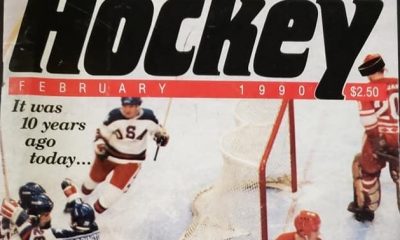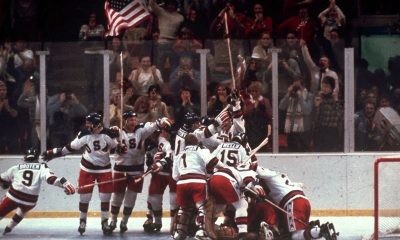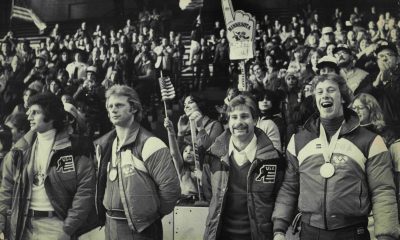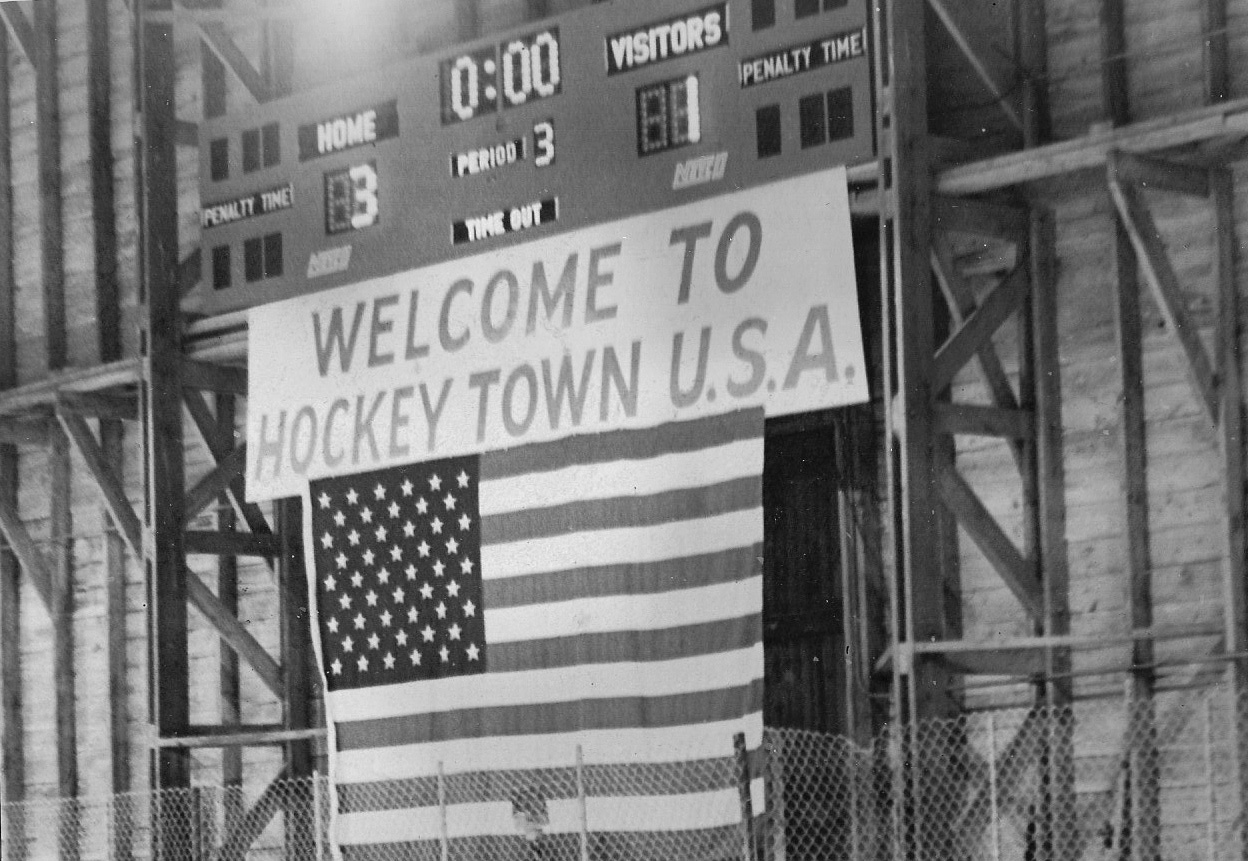Olympics
Miraculous Inspiration
True inspiration is a timeless thing, a very human event. Technology does not inspire the human soul, though the human soul
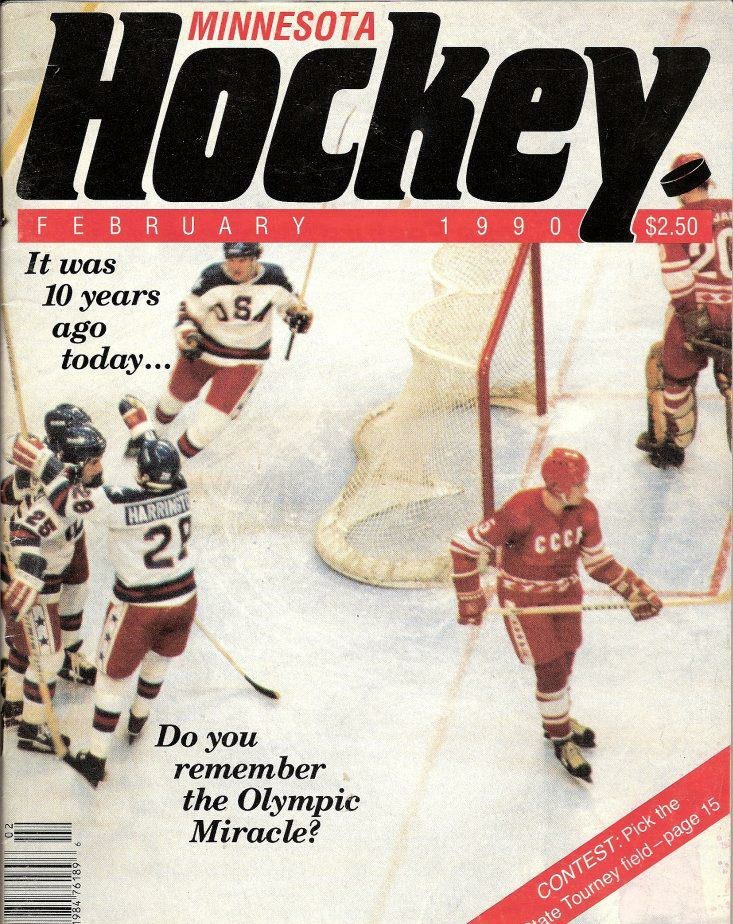
By Steven Fossedal
True inspiration is a timeless thing, a very human event. Technology does not inspire the human soul, though the human soul can — and does — inspire the creation of technology. This is not a story about technology, but it is a story about timeless inspiration, achieved before the dawn of the “Information Age”.
This is a tale of the inspiration of the human soul, forged by the human soul of one visionary man, who, in turn, inspired the souls of 20 young men who, in turn, inspired the souls of an entire nation (at a time when such inspiration was desperately needed) and continues to inspire us 35 years later (and counting).
Sherman, set the way back machine to 1979, if you please. Thank you.
1979, the PC is still 2 years away from its invention and far removed from its ubiquity. In fact, as I write this (the old fashioned way, using pen and paper), the PC, as we knew it, has largely gone the way of the Dodo or the dinosaur marching toward extinction giving way to the now ubiquitous smart phone, by and large more powerful than the PC and fitting easily in the palm of our hand.
It is not the technology that has made the smart phone more powerful than the PC (or the room-sized mainframe computers of 1979), it is the humanity of the smart phone, via its ability to connect people. Human connection is the power, and it existed long before the technological tools we enjoy and employ today. Connection. Teamwork. Team. An inspiration that created a “miracle” that inspired because its product was far greater than the mere sum of its individual parts.
The “Miraculous Inspiration” was, and is, the ability to achieve. Not by eradicating individuals in order to form a group entity free of individualism, but by empowering a group of individuals to choose to form a community (a team) by employing their individual talents and inner drive (pronounced “passion”) to set their egos aside in the pursuit of a team goal, having no idea how inspirational it would be for decades to come (if not time immemorial).
In 1979, Herb Brooks (the chief architect of this “Miraculous Inspiration”), without the technology tools of today — PCs, smart phones, and the internet — spent countless hours researching (the old fashioned way) the personnel he needed to create this community, this team, we look back on in deserving awe. Coach Brooks probably studied at least 100 players (observing them in person, watching hours of film (yes, film), interviewing their coaches, and so on in order to select the 20 individuals he would be able to inspired to create his “miracle.”
As coach Brooks himself said, he wasn’t looking for “the best” players, he was seeking out “the right ones.” He knew that he needed true individuals, people secure enough in themselves to be able to “check their egos at the door” and aspire to an ideal greater than themselves … to allow them to be inspired. The sheer passion, dedication, vision, and inspiration coach Brooks displayed in the research end alone should be an inspiration to us all and not just as hockey fans, players, coaches, and those who champion the sport of hockey.
Coach Brooks then relentlessly pursued this goal (pun fully intended), unwavering in the courage of his convictions, and thereby inspired the USOC to back him (even though there were doubters among the committee members). Most importantly, he inspired 20 young men to accept his challenge, commit to his vision, embrace it as their own and overcome “impossible odds” to construct what we now know as the “Miracle on Ice.”
Those 20 young men — 19 of whom are still with us (minus only the one who wore #20. We miss you, Bob) — were so inspired that they not only shed their egos (not their individuality) at the locker room door. They committed to a practice and conditioning regimen that was virtually, if not totally (outside of the then Soviet Team), unheard of at that time.
From speaking with my (sadly) departed friend, Bob Suter, who lived this, “grueling” is an epic understatement. Bob and I spoke of his experience on a few rare occasions, as he was incredibly humble and shied away from talking about “the miracle.” Still, I cannot claim to truly understand the experience as I did not endure it myself.
Talk about commitment and work ethic!! Those men (coaches, players, support personnel) chose to be inspired by a man who had a vision, a passionate commitment to that vision and, to the best of my knowledge, had no mission in mind to be an inspiration or possess such an inflated ego as to set out to make history.
As I understand it, coach Brooks was more or less awed by the fact that his vision and his boys had such an effect on our entire nation. To him, it was “a hockey game” (speaking specifically with regard to the legendary Olympic bout with the seemingly inhuman Soviet squad). It seems those 20 remarkable young men not only shared their coach’s inspiration, they also shared his awe in realizing what an inspiration they had become to their country; that is inspiring, in and of itself.
The aptly dubbed “Miracle on Ice” was ultimately achieved in Lake Placid, New York in February of 1980. I had just turned 9 years old in late December of 1979. I grew up in the far west suburbs of Chicago at a time when the Chicago Blackhawks touted the names of Bobby Hull, Tony Esposito, Keith Magnuson, and Stan Mikita on their roster.
As a kid, I did not understand hockey and, as a result, I really had no interest in the game (for which I kick myself in retrospect). Along came the Winter Olympics of 1980 and the infamous “Miracle on Ice.” At that point in time, I had no idea of who coach Brooks, Bob Suter, Jim Craig and that marvelous group of men that team were, much less what they were all about. Or how they came together, how they forged themselves into the inspirational legend they are and how their example and achievements would inspire me to this very day (along with many of you who are reading this story).
Regardless of my youthful ignorance, and my lack of interest and lack of understanding of hockey (at that point in time), I knew there was something very special about them. It was when I heard Al Michaels shout his immortal exclamation, “Do you believe in miracles?!?” that I began to take an interest in hockey. The seeds of MY inspiration had been sewn.
Since that time, my interest in hockey has grown into a love for hockey and that love has developed into an absolute passion for the sport. I know of no other sport that is so foundationally based, and built, on honor and passion. To me, hockey is the consummate team sport. Players that play for their individual stats fade away as quickly as the burst onto the scene and players that place their team first succeed long term and often achieve individual recognition as a result (see Wayne Gretzky and Mario Lemieux as shining examples).
What Coach Brooks, Craig Patrick, their staff and those 20 remarkable young men accomplished, against all odds, was nothing short of inspirational and it continues to inspire decades later, to this very day (and beyond). Their achievement serves as a beacon to all of us, lighting for us the path to what we can accomplish through belief, commitment, hard work, and the courage to persevere as both individuals and members of a community/team. I doubt any of those that “authored” the “Miracle On Ice” set out to inspire anyone, but inspire they did and still do over 35 years later.
The “Miracle on Ice” has been inspirational far beyond the game of hockey (and the creation of my passion for hockey individually). The principles and lessons learned from coach Brooks’ vision, to the tireless work he invested in building his team, to the way he inspired his team, to the team’s hard work and dedication (on and off the ice), to their commitment to each other and the vision of their coach, right down to the invaluable support and sacrifices of the families of those same players and coaches (for all of the years it took to build them into the people they were, and are, on and off the ice), all of those lessons and principles can be applied to our everyday lives as individuals, members of communities (businesses, neighborhoods, social groups, teams, and families), and brothers and sisters of humanity.
The “Miracle on Ice” serves as an inspiration to me each and every day, in good times and challenging times alike. In good times, I am reminded that there is always more I can do to contribute to my team, whatever that team may be. In challenging times, I am inspired to keep going and never give up (kind of like the “killers” the boys endured after that pre-Olympic game in Norway).
Sometimes life’s conditioning drills don’t make sense and don’t seem even remotely fair at the time. However, they prepare us for the big game, making us capable of going the distance and having something left in the tank when that third period stares us down across the dot.
If those boys from 1980 could endure the gauntlet they ran to even prepare for that miraculous run for that “unattainable” gold medal, endure the ridicule they received from those that thought they had a hockey rink’s chance in Hades of doing anything more than being fodder and an embarrassment to the nation, and then work that miracle, how can I, how can any of us, ever give up, no matter what we face off against?
That is the essence of “Miraculous Inspiration.” Thanks to all of you who set this example for all of us … shot taken and goal scored.







